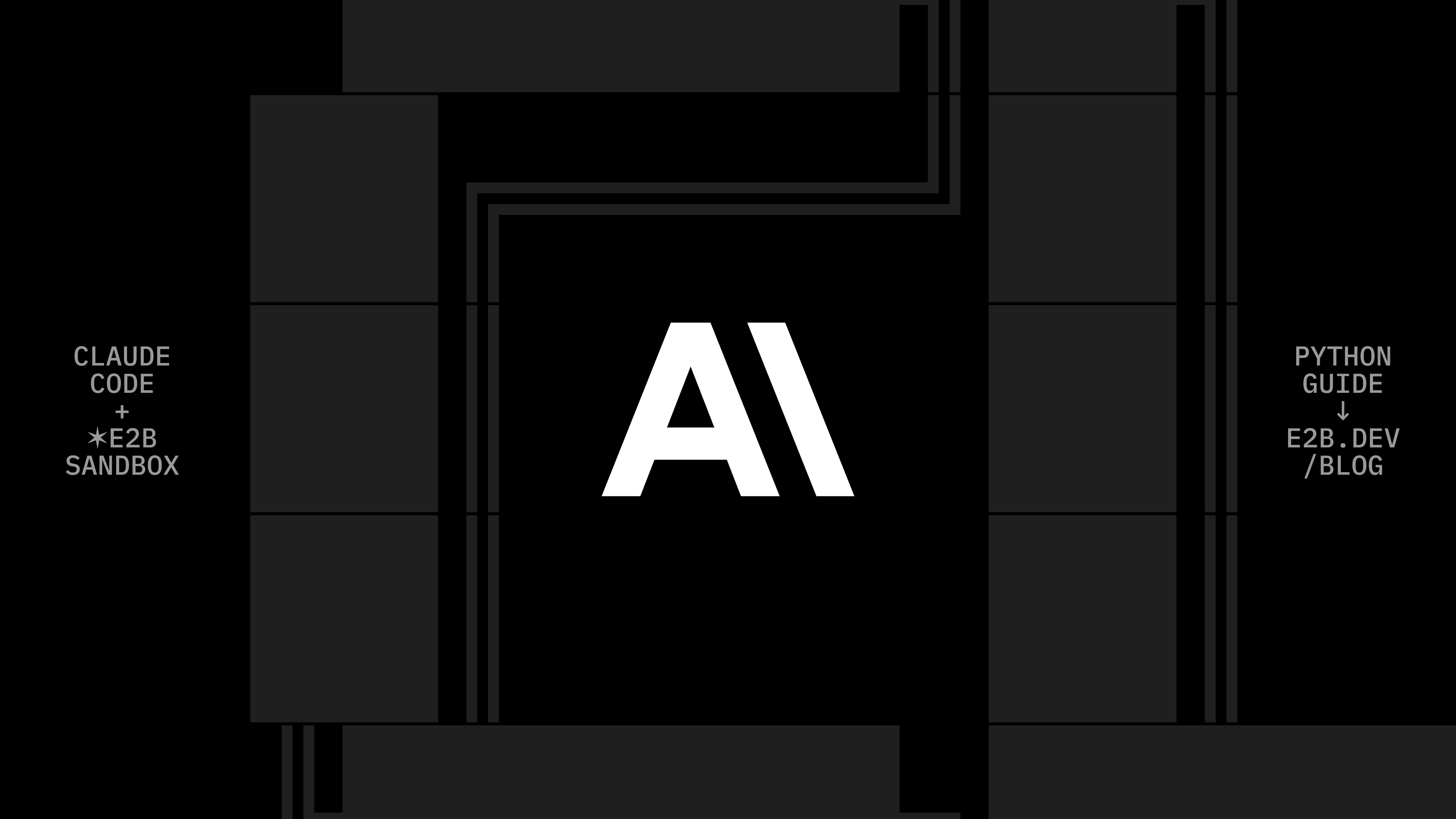Python Guide: Run Claude Code in an E2B Sandbox

Claude Code is Anthropic’s CLI that turns natural-language prompts into concrete edits, files, and shell commands. Run it inside an E2B Sandbox, and you get an isolated, long-running environment where the agent can safely create files, install tools, and execute without interactive prompts.
What we’ll build
- In this guide, we will show step-by-step how to run Claude Code in E2B’s isolated cloud sandbox.
- We’ll pass a simple prompt (“create a hello-world index.html”), cover the two timeouts you should care about, and keep secrets in
.env. - We will build a one-shot command that runs a prompt using Claude Code agent and returns the output.
See full example in the E2B Cookbook.
This is a Python guide using E2B Python SDK, for the JS/TS SDK version, see the JavaScript version.
Components we’ll use
- E2B Python SDK - creates and controls the E2B sandbox.
- Prebuilt E2B template:
anthropic-claude-code- ships with@anthropic-ai/claude-codeready to go. - Anthropic API - powers Claude Code via your Anthropic API key.
Prerequisites
- Python 3.11+
- E2B account +
E2B_API_KEY - Anthropic API key
Outline
- Create the project
- Add the files (
pyproject.toml,main.py) - Set API keys in
.env - Install with
pipand run
1) Create the project
First, we create the directories and the Python package folder.
mkdir anthropic-claude-code-in-sandbox-python
cd anthropic-claude-code-in-sandbox-python
mkdir -p anthropic_claude_code_in_sandboxThis is the target structure of the project. Keeping code in anthropic_claude_code_in_sandbox/ (with __init__.py) lets pip install -e . work cleanly and keeps imports tidy.
anthropic-claude-code-in-sandbox-python/
├─ anthropic_claude_code_in_sandbox/
│ ├─ __init__.py
│ └─ main.py
├─ pyproject.toml
├─ README.md
├─ .gitignore
└─ .env 2) Files to add
Now we create the following files.
File: pyproject.toml
[project]
name = "anthropic-claude-code-in-sandbox"
version = "0.1.0"
description = "Run Anthropic Claude Code in an E2B Sandbox"
readme = "README.md"
requires-python = ">=3.11"
dependencies = [
"e2b",
"python-dotenv",
]
[build-system]
requires = ["hatchling"]
build-backend = "hatchling.build"File: anthropic_claude_code_in_sandbox/__init__.py
# intentionally emptyFile: anthropic_claude_code_in_sandbox/main.py
The main.py file reads both keys from .env, uses the prebuilt template, 5-minute sandbox timeout, and no command timeout - so Claude may run as long as needed. In the main.py, we first import everything we need and load .env into process environment:
from dotenv import load_dotenv
from e2b import Sandbox
load_dotenv() # loads .env into process environmentThen we initiate the sandbox instance.
template_name = "anthropic-claude-code"
sbx = Sandbox(
template_name,
envs={"ANTHROPIC_API_KEY": "<your api key>"},
timeout=60 * 5, # 5 minutes; match README (remove this line to match the file exactly)
)
print("Sandbox created", sbx.sandbox_id)If you need more diagnostics, also print result.stderr. We add an example that generates a file via Claude Code inside the sandbox, print the result, and then kill the sandbox.
# Run a prompt with Claude Code
result = sbx.commands.run(
"echo 'Create a hello world index.html' | claude -p --dangerously-skip-permissions",
timeout=0, # allow long-running commands
)
print(result.stdout)
sbx.kill()We also need to add a .gitignore and .env files to store secrets/config outside code and git history.
File: .gitignore
.venv/
.env
__pycache__/
*.pycFile: .env
E2B_API_KEY="YOUR_E2B_API_KEY"3) Set up and install
python -m venv .venv
# macOS / Linux
source .venv/bin/activate
# Windows (PowerShell)
# .venv\Scripts\Activate.ps1
pip install -e .4) Run the example
python anthropic_claude_code_in_sandbox/main.pyWhat’s expected is the console output from Claude Code. The created files (e.g., index.html) live inside the sandbox filesystem.
See full example in the E2B Cookbook.
Secure AI Sandbox




